Inside Revolution Brewing’s Barrel Program Ahead of Cuvée De Grâce & Ten Year Beer
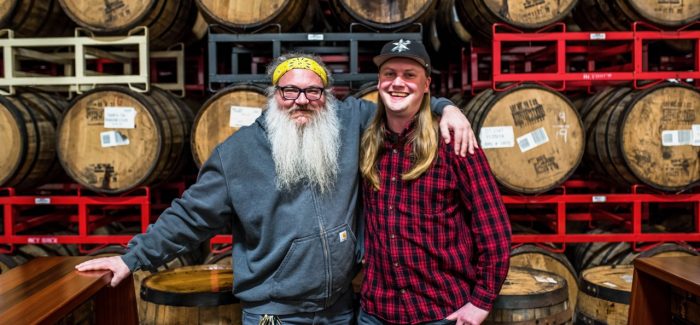
- Mike Zoller
- On January 22, 2020
From late September through the end of February Revolution Brewing’s Marty Scott has one thing on his mind – barrel-aged beer. As the brewery’s Barrel Program Lead, he’s been working with the Deep Wood Series since the first bottle was released in November of 2012.
Since Very Mad Cow was released in a 22-ounce bomber that year, Scott has been an instrumental part of the brewery’s barrel-aging program that has become highly sought after.
“In April 2010 I had an unpaid observation day with (Head Brewer) Jim (Cibak),” Scott said. “Over the next two years, I worked sporadic volunteer shifts and started a part-time paid apprenticeship. I’ve been full-time here at the production brewery since the first kegs were filled in May/June of 2012.”
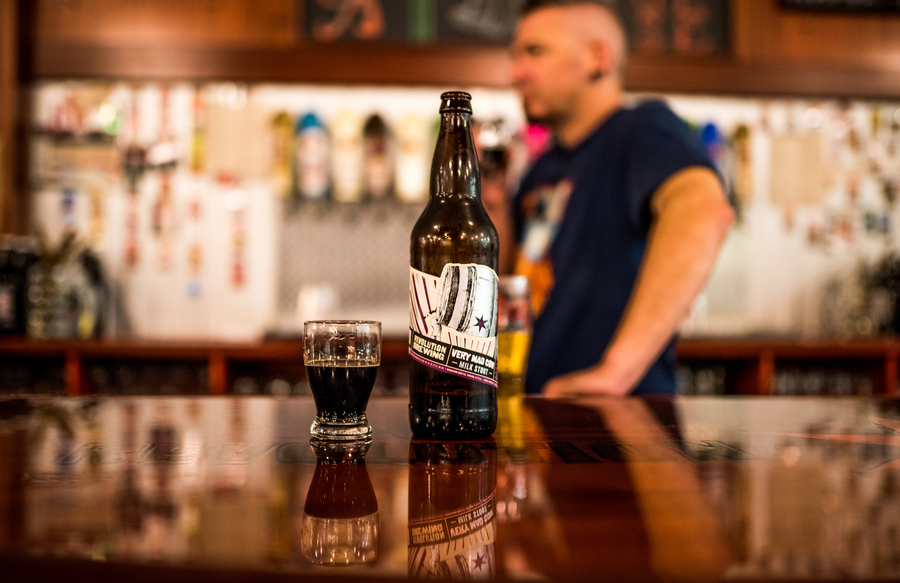
Back in the early days of Revolution, it was a much different operation than the one you’d see today if you were to take the tour at their Kedzie taproom. Back then, Scott, Cibak, and Matty Kemp, Revolution’s Employee #1, worked an endless rotation of brewing shifts just to keep production going.
“Jim would get here first and he would start pitching tanks with yeast and then he would call me out of bed and I would come here and take over and he would go mash in,” Scott said. “Once he was here for 12 hours he’d call in Matty and he might do a couple of dry hops.”
The first barrel-aged beer for the brewery was called Pablo Picasso, a reference to the Repo Man soundtrack from the Burning Sensations. And while Very Mad Cow was the first Deep Wood beer to be released, the only Deep Wood beer that has been made every year since 2013, is Straight Jacket. In 2019, including the beers being released on Friday, Revolution produced just under 1,100 barrels of barrel-aged beer.
For his first year at Revolution, he assisted Cibak with the barrel program and after that, it was his.
“On barrel days Jim would come into the cellar and there were a bunch of late nights doing all that extra work,” Scott said. “After the first year, Jim asked me if I wanted the barrel program and since I didn’t own any specific thing here I said yes.”
While Cibak celebrated 20 years of brewing in 2015, Scott was a lot greener to the industry but still brought his own take on the barrel-aged beers. Having Revolution’s resources at his disposal, Scott has been able to push the brewery’s barrel program to the next level.
“This is my first brewery gig,” Scott said. “For something like this, it’s great to have all these different colors on my palette to go painting with.”
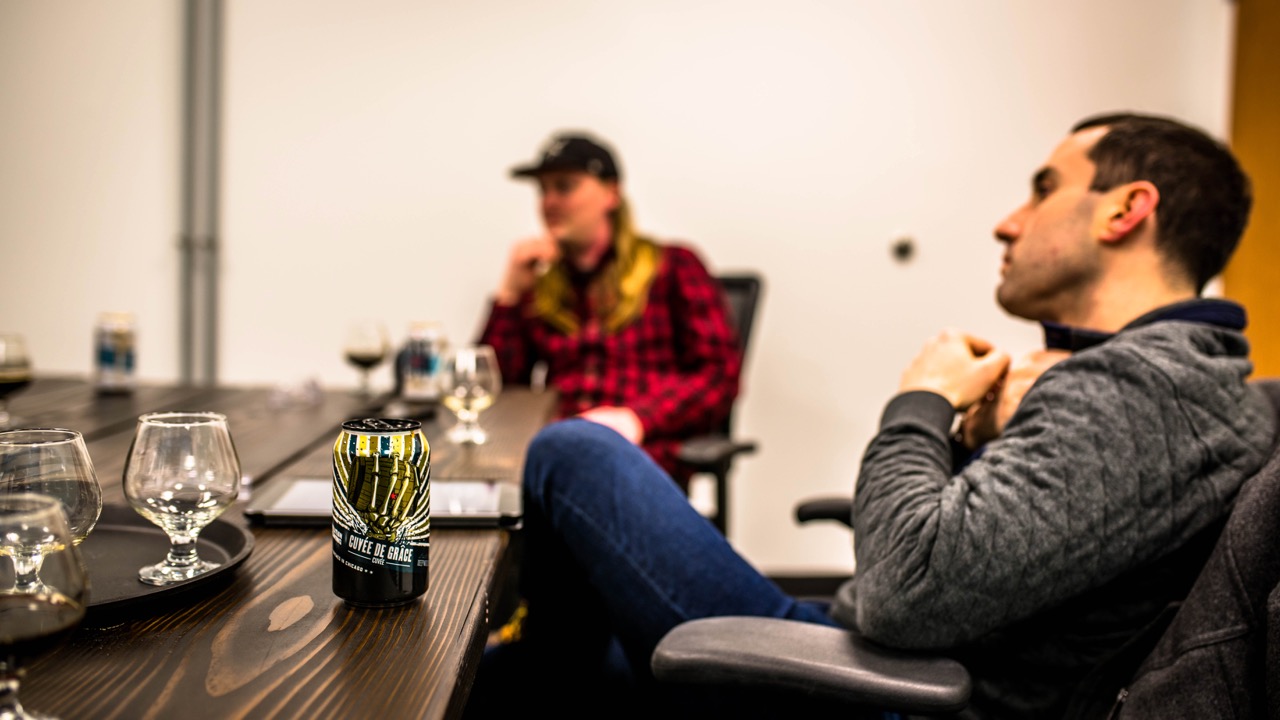
As the brewery has gotten bigger its opened doors to barrel opportunities that they wouldn’t have had access to in their earlier days.
“The larger your barrel program, the more the cooperage you can obtain,” Kemp said. “You can get a truckload (of barrels) instead of only buying like seven. We’ve helped people over the year, we’ll send four barrels to a smaller brewery who can’t take on a larger shipment so we like to help out when we can.”
With all of the different barrels to work with, one skill Scott has continued to perfect is the art of blending.
“If something doesn’t work, as long as you don’t have 100 barrels of it in your stack, you can try to blend it away and maybe you find something that really does works.”
Cuvée De Grâce & Ten Year Beer
Blending has been a big component of Scott’s style and that’s none more prevalent in the brewery’s newest Deep Wood release Cuvée De Grâce & Ten Year Beer available this Friday. Both beers utilize complex blends of beers to produce the final product.
Cuvée De Grâce came about when Revolution owner Josh Deth was hoping to have fewer barrels carried over from year to year. While he wanted some to be used in future years, there were several different barrels that didn’t have a lot in volume and so Scott decided to get creative.
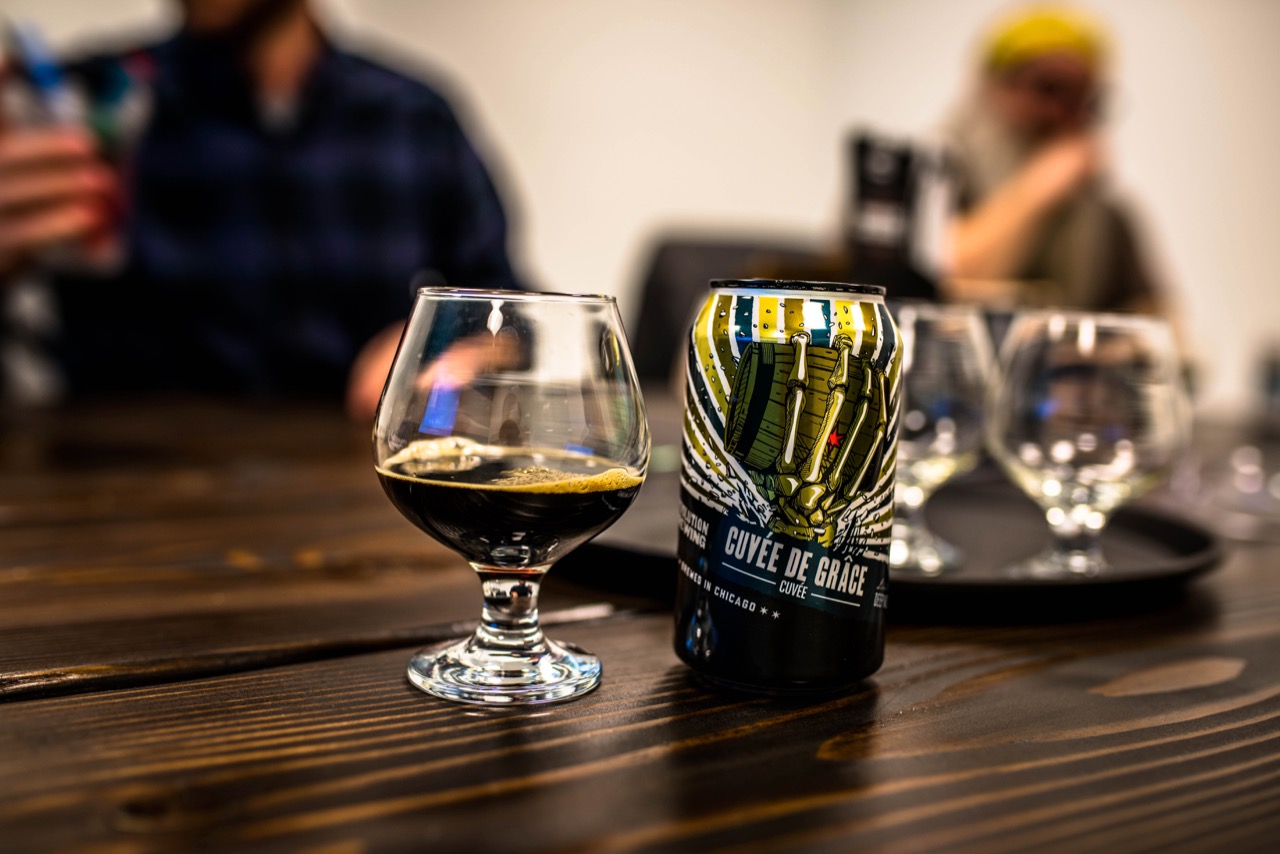
“We were looking for another cool beer for this year to get to 10 Deep Wood beers,” he said. “I wasn’t feeling super strong about any new recipes and we had a couple of barrels that would have been draft only, like the Tawny Port and Madeira, and a handful of other specialty barrels that didn’t have a designated purpose. We knew we could execute a cuvée pretty much at any point and we could pick the right gravities, ABVs, and barrels to hopefully be complimentary.”
A variety of different barrels and beer styles combine to make Cuvée De Grâce and by using a little math to compliment his blending skills, Scott put together a beer that features an incredibly deep flavor profile of fruit, vanilla, coffee, and chocolate.
“Mathematics was key in the blending,” he said. “We looked at the finishing gravities and at the different batch numbers and actually put them on the cans. We brew everything in the Deep Wood program either way too sweet to drink or way too dry to drink and then age them and bring them back together in just the right numbers.”
While you’ll get fruit notes in the beer, there isn’t actually any fruit in it. A touch of fermented grape juice shows off that fruit-forward flavor profile. And while you’ll also notice vanilla, there’s no added vanilla, it’s all from the oak characteristics of the barrel.
“It’s about the beer and the barrel,” Scott said. “You can get this whole next level if you focus on the blending. Even the smallest components have an impact.”
For the Ten Year Beer, blending is still very much a part of the beer, but with just fewer components going in. Celebrating the brewery’s tenth year in operation, they blended together their English Barleywine that had been aging between 12 and 24-months and then added a combination of sweet and tart cherries.
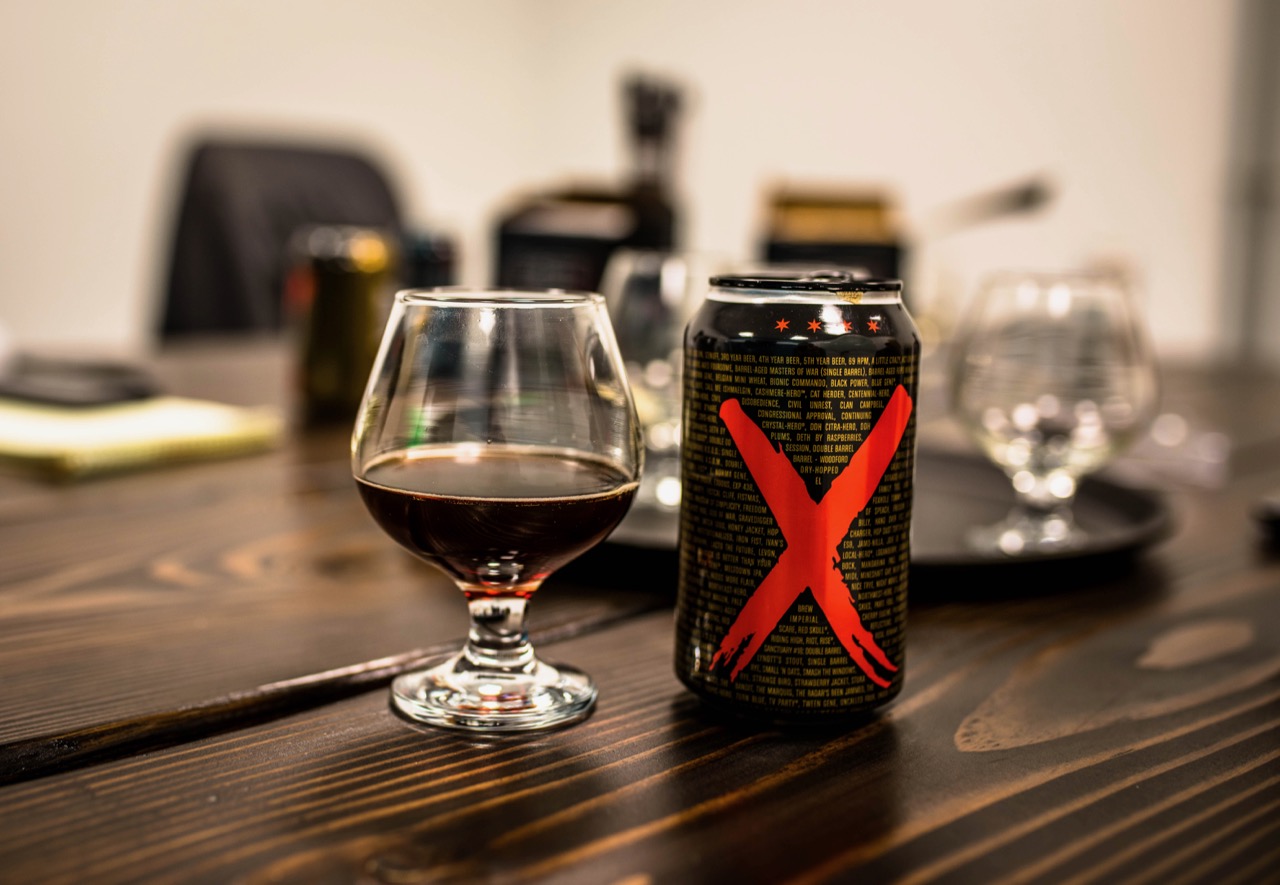
The result is a Barleywine that both Scott and Kemp called their favorite Deep Wood beer of the ten released in the past four months.
“We wanted as much barrel as possible,” Scott said. “We used as much two-year component as possible and balanced it with some one-year component. Then hit it with a blend of cherries.”
The Early Days
While today craft beer fans flock to Revolution once a month every four months with the hopes of snagging these special release four-packs, the Deep Wood Series didn’t always carry this much fanfare.
The early bombers sold, but over time with the series’ switch to cans and the continuation of making small tweaks each year, Revolution’s Deep Wood has become a household name.
“Every year is another shot for our brewers, cellarmen, and packaging teams to improve upon what we’ve been doing since our first Deep Wood beer in 2012,” Scott said. “There are about two dozen people who have a hand in making the liquid what it is.”
To get to this point they had a few learning moments when dealing with barrel-aged beer.
“Our biggest mistake, and we’re pretty open about this, was that we started our year-round barrel program around Eugene Porter,” Kemp said. “That lower alcohol was great when it was fresh but getting only 8 or 9% after aging it, that’s only going to age so well for a couple of years for the most part. We learned that we weren’t putting strong enough beer in those barrels.”
Today, Revolution won’t put any beer into a barrel that’s not at least 10% in ABV. In addition to the low ABV issue, the barrels and climate control problems also plagued Revolution early on.
“We had shit barrels, we had beer that wasn’t strong enough for barrels, beer that wasn’t designed to go into barrels, and no climate control,” Scott said. “I remember coming in the summer when the barrels are aging and you’d see a barrel head on the floor pretty routinely. You’d find the right barrel and all of its liquid is down the drain.”
To ensure the best quality of barrels, today Revolution has one exclusive barrel provider.
Back then, Scott estimated that they’d pour out 20-30% of all the beer they put into barrels. Over the last three years, Scott said they haven’t had to dump a single barrel.
“The liquid, the barrels, the storage, and now that we’re mashing in with the knowledge that it will go into barrels and we can manipulate the numbers we see fit so it ages the way we want it to age,” he said.
Quality Control
A brewery’s barrel-aged beers are usually their most scrutinized and anticipated beers they will release. With the highest price tag, customers expect the highest quality with every single release.
Chicagoland is no stranger to recalls and infection issues with barrel-aged beer.
“We have had our issues,” Scott said. “We’ve had Blue Genes, Mean Genes, and Very Mads that have had infection issues in bottles, but only ever bottles – never draft.”
An infection issue can happen to any brewery and with an increase of craft beer drinkers and the rise of social media and message boards, a potential infection can spread quickly. How the brewery responds is critical.
“You’ve seen other breweries that have had issues with their barrel-aged beer and people reaching out and the brewery not owning up,” Kemp said. “They say that’s how they want the beer to taste or they don’t detect anything wrong with it and the people drinking the beer know that’s not necessarily true. You’re blowing smoke up my ass. We’ve owned up. We had a 10,000 barrel recall a few years ago. We didn’t have the means to detect the issue and there was some cross-contamination with the house yeast.”
While Scott avoids the message boards, he will go onto Untappd and social media only at specific times.
“On the night of a release, I’ll give myself the rest of that night to see how people are responding to the draft variants to see what we got right and what people thought we didn’t get right.”
But even after doing this for all of these years, Scott still isn’t 100% comfortable on release days.
“You’re on eggshells,” he said. “If it’s your first or second vintage year, standards are a little bit lower as people are trying to figure out what you’re attempting to do. We’ve released Straight Jacket for six years in a row and people have expectations. These beers are always going to change based on how we blend them together and hopefully, they are always awesome but they will always be a little different.”
Revolution’s Communication Manager John Carruthers said that the brewery has a full process that goes into action whenever there’s a complaint around the quality of a beer. The brew team and packaging team are both alerted and if they can’t get a can whose quality was questioned, the brewery has ways to try to replicate the problem to see what might have gone wrong.
“We’ll keep batches that are stored warm on purpose, some in room temperature, some cold, and so we can try to figure out what might have been the problem,” Kemp said. “Did this beer sit on the floor for two years before being sold and then it was kept warm? The longer it stays warm, it’s not going to get any better.”
No matter what the year is they’ll take the issue seriously but if someone complains that their 2016 Café Deth has lost its coffee flavor, there’s not a whole lot the brewery can do.
Competitions
The number of beer competitions has exploded over the past couple of years, and while brewers will tell you they don’t care if they win a medal, that feeling of hearing your name called at an elite competition like the Festival of Wood and Barrel-Aged Beers is exciting.
“It’s always cool,” Scott said. “At big competitions, people say the medals don’t matter and in a lot of cases they don’t, because there are so many festivals, so many medals you can win in so many different categories. But at the same time, there is a lot of great beer out there and a lot of these brewers are putting out their best beers at these competitions.”
FoBAB only allows breweries to enter two beers into the competition. So when Revolution won two medals at this past year’s competition for Strawberry Jacket and V.S.O.R. it was an incredible feeling for Scott and the Revolution team.
“To grab a silver and then a gold and go two-for-two that was rad, especially in categories that we hadn’t entered before,” Scott said.
Staying Relevant
Today there are a plethora of barrel-aged beers to try in the Chicagoland area with so many attempting, some successfully, to push the boundaries.
Revolution has resisted the pastry stout path, but Scott says that he respects the innovation and creativity in the industry today. But he’s looking to do things that aren’t typical in barrel-aging.
“No one is looking to wine-making methods unless they’re making sours, they’re doing beautiful blending, but nobody thought to do it at scale with Barleywine, why not?” Scott said. “There are certain adjuncts we’ll go crazy with – like coffee. Café Deth has a shitload of coffee in it from a program that doesn’t go crazy for adjuncts, but coffee is a traditional adjunct in barrel-aged beer.”
What you won’t see Revolution doing is throwing a ton of adjuncts into one beer or finding that crazy fruit to add to a stout.
“ScouringAmazon to find a never before used adjunct just so you can put it in a beer is as Jim Cibak like’s to say “Not really our thing,” Scott said. “Quality, consistency to a point, and complexity; if we hit on all three numbers we don’t have to scour the Amazon for that never before used fruit.”
Hearing feedback from Revolution’s fans further cement’s the brewery’s approach toward resisting adjuncts.
“In some ways, our growing fan base has made it easier for us to stay the same,” he said. “They know us, what we make, and this is what we’re going to do. People like what we put out and they might also still like pastry stouts, but I don’t go to Rev looking for pastry stouts. I go to Rev looking for what Rev does. We’ve never sat down before and thought about what’s the best cereal with the most sugar and how can we use that in a beer.”
Scott respects the barrels they use so much that he wants to make sure they always remain a key component of the beer.
“We don’t want to do anything that detracts away from barrel worship,” Scott said. “Putting beer into an oak vessel and letting it age for one to four years and then taking it out, if you can’t tell it was in a barrel why did you do it? You just wasted your time. You picked up a little bit of whiskey or wine…good for you. We want these beers for beer drinkers. We want to make the best liquid possible to go into them.”
As for what’s next for the Revolution barrel program, Scott has a little notebook with all kinds of ideas he wants to explore, some of which they might not do for 18 months or even more. For now, though he’s beginning to focus on the next batch of Deep Wood beers with half of the liquid already in barrels.
The brewery usually announces the lineup in late summer with the first release typically happening in October. Of course, in 2019 the brewery released two summer Deep Wood beers so who knows what’s up next for the series.
But even before this Friday’s last Deep Wood release, there’s already talk about what Revolution will be coming out with later this fall.
Feature photo from Eric Dirksen. (Left Matty Kemp. Right Marty Scott)
Related Posts
Real Wild & Woodsy Festival | Flagstaff, Arizona... July 11, 2023 | Ruvani de Silva
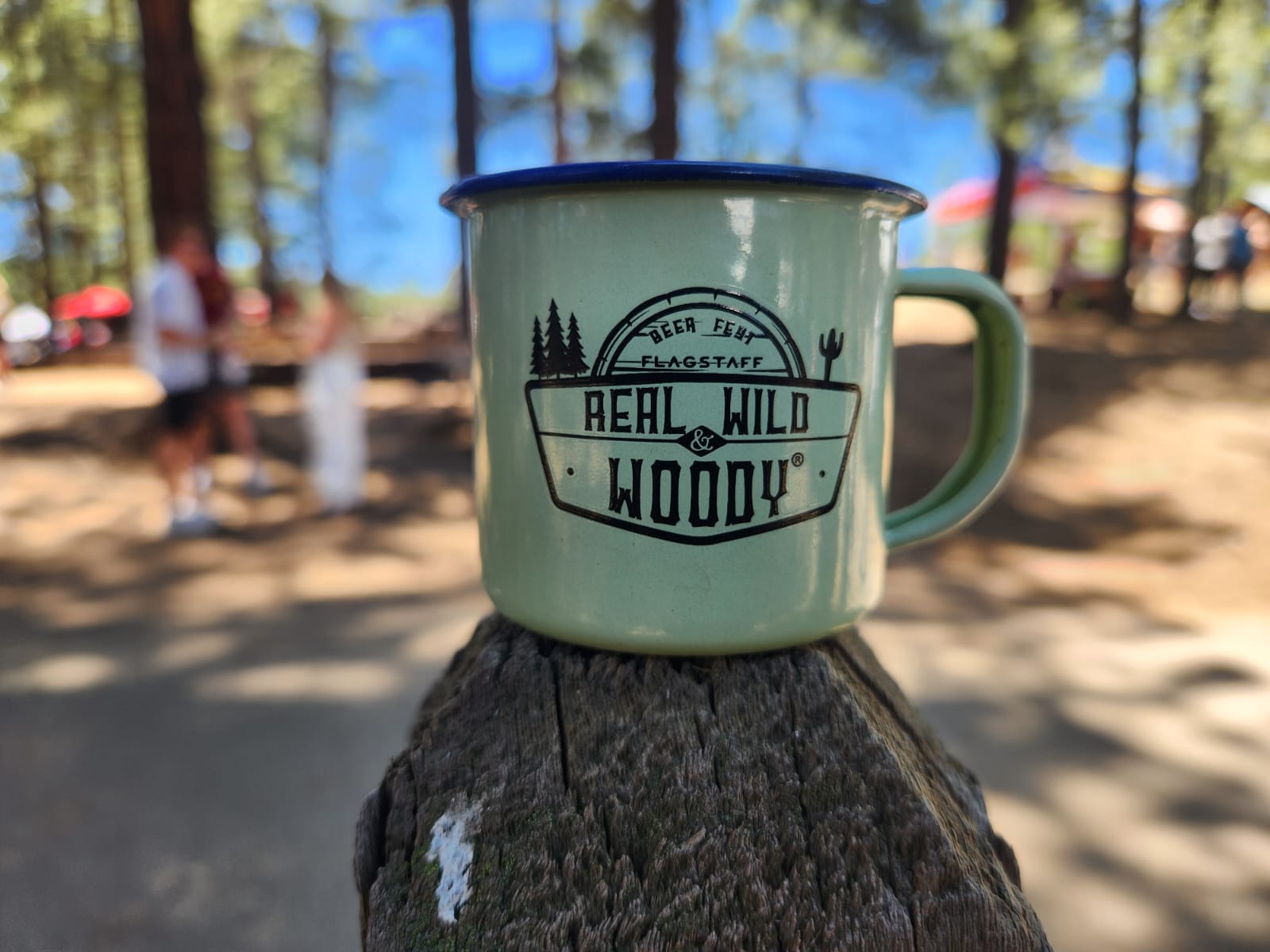
Goose Island Reveals 2019 Bourbon County Stout Lineup... August 14, 2019 | Mike Zoller
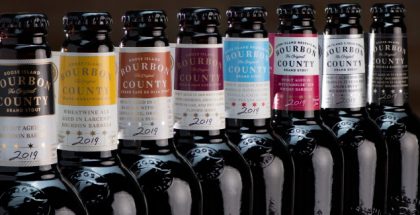
Released! 2016 Goose Island Bourbon County Stout Lineup... December 6, 2016 | Carly Mento
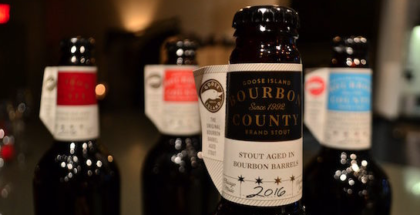
Chicago Quick Sips | Dec. 3 Chicago Beer News & Events... December 3, 2018 | Taylor Laabs
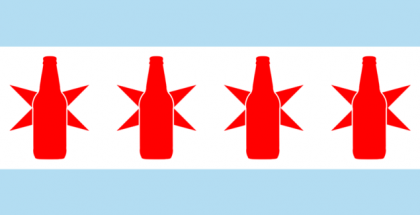



Submit a Comment